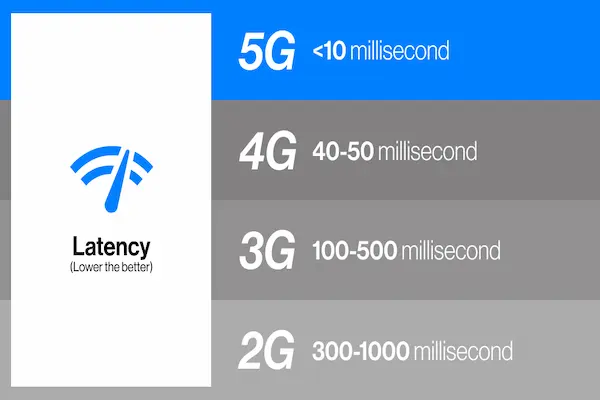5G Coverage & Real-World Speed: How to Check and Improve Results (2025)
Check the 5g coverage map, run real speed tests, and boost signal safely.
Advertising
The 5G era promises ultra-fast downloads, low latency, and smoother streaming, but your real-world experience depends on where you stand and how you measure.
This practical, independent guide shows you how to read any 5g coverage map, test speed correctly, and apply safe hacks to boost results without breaking rules or warranties.
We have no relationship with carriers, device makers, apps, or third parties cited conceptually here, and you should always verify official conditions before changing plans or settings.
Why your “5G” can feel fast, slow, or somewhere in between
5G is a family of technologies that operate on different bands with different behaviors.
Low-band 5G travels far and penetrates buildings well but offers modest gains over 4G.
Mid-band like band n77 often hits the sweet spot with strong speeds and solid coverage.
High-band mmWave can be extremely fast but is sensitive to distance and line of sight.
Your phone, firmware, network congestion, and even how you hold the device all influence results.

Reading a 5g coverage map like a pro
A 5g coverage map is a forecast of where signals should reach rather than a guarantee.
Treat it as a starting point for planning and then verify with on-site measurements.
Understand that maps may aggregate different 5G types without clearly separating bands.
Key layers and legends to look for
- Technology layer: Distinguish 5G Low-band, 5G Mid-band, and 5G High-band where possible.
- Confidence shading: Darker shades usually mean stronger predicted signal or denser site grids.
- Indoor vs outdoor: Some maps show indoor confidence separately because walls attenuate signals.
- Roaming and partner areas: Note if coverage relies on partners with different performance profiles.
- Planned vs live: Planned upgrades may appear months ahead and should not be assumed available today.
How to compare neighborhoods or travel routes
- Zoom out to view your commute, school runs, and typical weekend destinations, not just your home.
- Identify mid-band corridors such as band n77 along highways and city arteries for consistent speed.
- Check large venues, malls, and transit hubs separately because indoor systems can differ from street coverage.
- Mark weak pockets where you routinely lose signal and plan alternative data paths like Wi-Fi or offline maps.
Preparing your phone for accurate 5g speed test measurements
A clean test environment avoids misleading results and saves troubleshooting time later.
Device and network hygiene before you test
- Update your phone’s OS and carrier settings to the latest available versions.
- Charge above thirty percent to prevent power saving from throttling radios.
- Disable VPNs, app-based firewalls, or data-saving modes during the test window.
- Close background apps that may consume bandwidth such as cloud backup or video calls.
- Stand still during tests to avoid cell handoffs that distort readings.
Where and how to run a reliable 5g speed test
- Test in multiple spots: indoors by a window, outdoors at street level, and on higher floors if available.
- Run at least three back-to-back tests in each location and average the results.
- Measure at different times of day to capture congestion patterns like lunchtime and evening peaks.
- Record download, upload, latency, and jitter to understand both speed and responsiveness.
- Note the serving band or channel if your device shows it, especially when hunting for band n77.
Interpreting results beyond the headline “download Mbps”
Raw speed matters for large downloads, but experience is driven by more than one number.
Metrics that signal consistent everyday performance
- Latency: Lower is better for gaming, calls, and cloud apps, typically under forty milliseconds for smoothness.
- Jitter: Stability matters for streaming and video meetings, and lower jitter reduces freezing.
- Upload: Creators and remote workers feel upload speed when sending files or streaming live.
- Packet loss: Even tiny loss can cause stutter on calls, so aim for clean runs during tests.
Safe, practical hacks to improve 5G signal strength and speed
These tweaks are policy-friendly, reversible, and focused on positioning rather than risky modifications.
Positioning and line-of-sight wins
- Move toward windows or balconies to reduce wall attenuation, especially in concrete buildings.
- Change orientation: rotate the phone and avoid blocking antennas with your palm or a metal case.
- Step out from behind obstacles like elevators, thick pillars, or parked vans that shadow signals.
- Walk a slow thirty-to-fifty meter arc around your spot and re-test to find micro-pockets of stronger signal.
Band n77: the mid-band sweet spot
- Band n77 often balances coverage and speed better than low-band or mmWave in everyday scenarios.
- If your device can display band info, note when tests succeed on n77 and favor those locations for work calls.
- Re-test after minor moves because small shifts can move you between bands due to cell reselection.
Router and home setup for 5G gateways and mobile hotspot users
- Place 5G gateways near a window facing the nearest tower corridor where signal is strongest.
- Elevate devices on a shelf to minimize ground-level clutter and human body absorption.
- Use short, high-quality USB-C power cables to avoid dropouts caused by voltage sag under load.
- Separate the Wi-Fi channel plan from the cellular side: reduce 2.4 GHz congestion and enable 5 GHz or 6 GHz where supported.
- For mobile hotspot, keep the phone cool with airflow or a simple stand to avoid thermal throttling.
Network selection and resets that do not void anything
- Toggle Airplane mode for sixty seconds to force a fresh network registration when speeds tank.
- Manually prefer 5G Auto instead of 5G Only so the device can fall back gracefully when coverage dips.
- Clear network settings only as a last resort and re-enter Wi-Fi passwords after the reset.
- Reboot after OS or carrier updates to ensure new radio policies apply cleanly.
How to log results like a field engineer without special tools
Good notes let you troubleshoot patterns and make smarter decisions about plans and hardware.
Simple logging template you can replicate
- Location: Address or GPS plus floor and room details.
- Time window: Time of day and day of week to capture congestion trends.
- Device and firmware: Phone model and software version to explain differences.
- Radio context: 5G indicator, band if visible, and signal bars or dBm if available.
- Results: Download, upload, latency, jitter, and packet loss per test.
- Notes: Positioning, obstacles, and tweaks tried for that session.
When a mobile hotspot is the right answer
A mobile hotspot can bridge weak home broadband or offer redundancy for remote work.
Best practices for mobile hotspot stability
- Use mid-band 5G areas when possible because they balance speed and range.
- Limit connected devices or set bandwidth caps to avoid one user saturating the link.
- Prefer 5 GHz or 6 GHz Wi-Fi bands for nearby laptops to reduce local interference.
- Keep the hotspot device powered and cool to minimize throttling or disconnections.
Ethical and compliant optimization: what not to do
It is important to respect laws, spectrum rules, and carrier terms.
Skip risky modifications and stick to reversible tweaks
- Do not attach unsanctioned external antennas or amplifiers that may violate regulations.
- Avoid software or firmware modifications that circumvent carrier policies.
- Do not mount equipment in shared hallways or building exteriors without permission.
- If a setup requires drilling or permanent fixtures, use approved installers and follow local rules.
FAQ: 5g coverage map, 5g speed test, band n77, signal strength, mobile hotspot
How accurate is a 5g coverage map for my exact apartment.
Coverage maps are predictive and do not guarantee indoor performance, so verify with on-site tests across multiple rooms and times.
How many 5g speed test runs do I need for a trustworthy average.
Three to five back-to-back runs per spot, repeated at different hours, create a more representative picture.
What is a good speed for everyday work and streaming.
Download above fifty megabits per second with latency under fifty milliseconds generally feels responsive for most tasks.
Why does my phone show 5G but act slower than 4G sometimes.
Congestion, bands with limited bandwidth, or weak indoor penetration can all reduce effective throughput despite the icon.
What is special about band n77.
Band n77 is mid-band spectrum that often offers the best day-to-day balance of speed and coverage for urban and suburban areas.
Can I force band n77 on my device.
Most consumer phones do not allow band locking, so your best approach is to reposition and re-test until the network prefers n77 naturally.
Will a mobile hotspot drain my battery too fast.
Yes if unmanaged, so keep the device charging, limit connected clients, and use higher-efficiency Wi-Fi bands when close.
Does a case or accessory really affect signal strength.
Metal plates and thick multi-layer cases can attenuate signals, so test without them if speeds seem inconsistent.
Is mmWave worth chasing for home use.
It can deliver exceptional speeds outdoors or with line-of-sight indoors, but it is sensitive to obstacles and may not be consistent enough for primary connectivity.
Field-tested playbook: step-by-step to better 5G in one afternoon
Follow this structured routine to map and improve your personal coverage without special gear.
Step 1 — Map and shortlist
- Review your daily routes and pick three to five critical spots to test.
- Identify likely mid-band corridors and note where indoor performance matters most.
Step 2 — Prepare and baseline
- Update software, charge the phone, and disable VPN and battery saver.
- Run three tests in each spot and log download, upload, latency, and jitter.
Step 3 — Optimize positioning
- Move to windows or higher floors and rotate the phone between tests.
- Walk slow arcs to locate micro-pockets with stronger signal and retest.
Step 4 — Lock in improvements
- Choose preferred work and call spots based on consistent performance, not peak spikes.
- Adjust home gateway or desk placement to mirror your best-performing locations.
Step 5 — Stabilize and document
- Schedule quick retests at peak times to confirm stability under load.
- Document your final setup so you can reproduce it after updates or moves.
Editorial note
This article is people-first, informative, and independent, and it does not constitute carrier or vendor advice.
We do not have affiliation with manufacturers, carriers, apps, or platforms referenced conceptually here, and features or availability can change without notice.
Validate commercial terms, device eligibility, and service policies in official sources before changing plans or equipment.
Final checklist for consistent real-world 5G
- Understand your local mix of low-band, mid-band, and high-band 5G.
- Use a 5g coverage map as a planning guide and verify with on-site tests.
- Prepare your device for clean measurements and average multiple runs.
- Prioritize mid-band corridors such as band n77 for balanced results.
- Optimize positioning, windows, elevation, and device orientation.
- Tune home gateways and mobile hotspot settings for stability and cooling.
- Stick to safe, reversible tweaks and avoid risky hardware modifications.
- Log locations, times, and results so you can track improvements over weeks.





